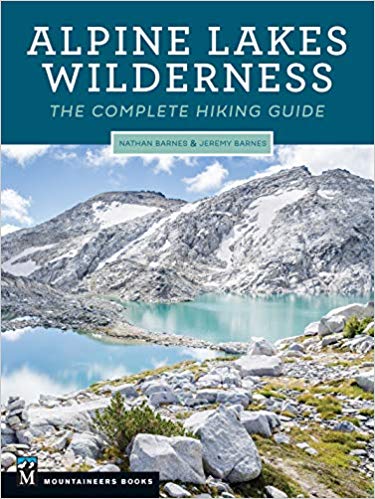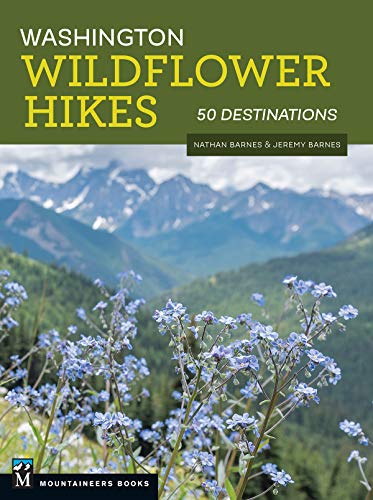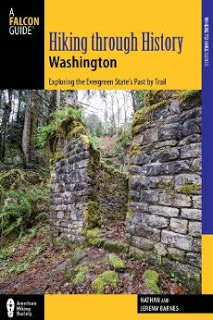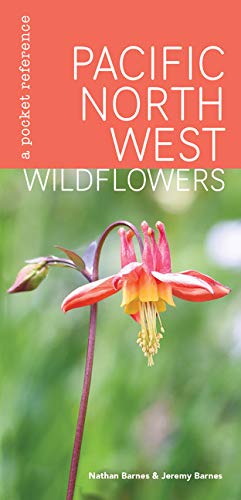Pratt River Trail #1035
Walk down a trail steeped in the history of the Middle Fork Snoqualmie Valley.
Total Distance: 8.4 miles
Total Ascent: 300ft
Highest Point: 1300ft
Total Ascent: 300ft
Highest Point: 1300ft
Take Exit 34 off I-90 and take a left on 468th Ave. Follow the road past the truck stop for about a half-mile until you reach SE Middle Fork Road, also known as Forest Road 56. Turn right and follow the road for a few twists and turns, keeping left when the road splits. After 2.2 miles reach SE Dorothy Lake Road. Take a left, passing the Mailbox Peak Trailhead as you continue 9.4 miles to the Middle Fork Trailhead. The signed trailhead and ample parking area is on the right side of the road, find the trail to the Gateway Bridge at the north end of the lot. Privy available.
Those looking for the Pratt River Shortcut and are willing to ford the Middle Fork Snoqualmie River to cut out a few miles of trail can park at an established pullout 6.6 miles down the Middle Fork Road at the Pratt River Bar. View Google Directions >>
Those looking for the Pratt River Shortcut and are willing to ford the Middle Fork Snoqualmie River to cut out a few miles of trail can park at an established pullout 6.6 miles down the Middle Fork Road at the Pratt River Bar. View Google Directions >>
Every trail has a story, though some like the Pratt River Trail have a longer story to tell. While access has been limited in the last few decades, in recent years there has been an effort to reconnect hikers to the Pratt River Valley.
Start from the Middle Fork Trailhead, crosses the Gateway Bridge and veers right onto the newly upgraded Pratt Lake Connector Trail (signed Pratt River Trail #1035). Soon cross into the Alpine Lakes Wilderness and in 0.25 mile pass the junction with the Stegosaurus Butte Trail. Stroll along the smooth trail, enjoying the friendly sounds of the river and the bright, riparian woods. Before long, reach the bridge spanning Rainy Creek and the Rainy Creek Trail junction at the 0.6-mile mark. Reserve that hike for another day and glide past, making good time along the nearly flat trail. Skip over a few streams and wander over sturdy boardwalks as the miles fly under your feet, reaching the 2.9-mile mark surprisingly quickly.
Here you’ll find a campsite and access to the river where some hikers choose to ford the Middle Fork Snoqualmie River during the summer months. That shortcut not only shortens the hike by nearly 3 miles, it also follows a much older approach to the Pratt River Valley, as this is the approximate location where bridges once provided more direct access. Not far beyond this point the trail reaches the Pratt River and turns up the river valley, along old railroad grade. The forest deepens as you progress, through feels slightly off – this is a legacy of the logging practices of yesteryear – almost all the trees are Douglas fir and roughly the same age.
Keep an eye out for artifacts as you press deeper into the valley. Rusting metal, old cables and rotting railroad ties can all be found along the way. After 1.0 mile of hiking arrive at a junction simply signed “Big Trees” and “Trail” with arrows directing hikers where to go. If you’re looking for more trail time, head left and continue to follow the railroad grade until you’ve had your fill. On the other hand, if you want a shorter day you can veer right and downhill to find an enormous, 250ft tall Douglas fir tree about 0.3 mile down the trail.
There are no big views on this hike, just a hike through a forest that can be as short or long as you would like. Still, the Pratt River Valley is definitely worth a tour, especially for those hikers looking for a bit of adventure. It is possible for experienced hikers to make this a through-hike by bushwhacking their way all the way out to the Granite Mountain Trailhead via Pratt Lake. However, most hikers will be content to trek out to the Big Tree and call it a day, happy to enjoy the quiet solitude of this old trail.
For those wishing to ford the Middle Fork, park at the Pratt River Bar. From there, cross a small creek and follow the path as it meanders through blackberries and cottonwood toward the sound of the river. Once you reach the river, head upstream for a few hundred yards while looking across the water for a small trail leading up the embankment. Once you locate it, ford the river and follow the trail a short distance up to the Pratt River Connector Trail.
In 1934 the North Bend Timber Company acquired the rights to log the Pratt River Valley and quickly began constructing a logging railroad largely following the Pratt River Trail route. A bridge across the Middle Fork was completed in 1936 and the railroad stretched the length of the valley by 1937. Over the next several years, the valley walls were logged up to 300 feet on either side of the tracks, which was the furthest reach of the cables. By 1941 the easy timber had been harvested and the North Bend Timber Company began pulling out the rails, leaving the wooden ties behind. Aside from some intermittent truck logging in the 1950s, this was the end of the major logging operations along the Pratt.
Once the timber interests pulled out, more hikers and outdoor lovers started to explore the Middle Fork Snoqualmie Valley. Some followed the portion of the Pratt River Trail that leads up the Middle Fork toward Goldmyer Hot Springs, while others followed the railroad grade up the Pratt Valley through a recovering forest out toward Melakwa Lake or Talapus Lake. The Forest Service built up the trail, adding boardwalks and small bridges to the sections along the Middle Fork. Eventually the railroad bridge washed out and hikers replaced it in the 1970s with an improvised bridge anchored to stumps on either side of the river. That bridge also washed away, though you can still find the rusting anchoring cables along the river.
Without a bridge, trail use steadily declined and nature began to take back the trail. It wasn’t until 1993 that the Gateway Bridge was built a few miles upstream, once again allowing hikers to access to the trail. In recent years, the Washington Trail Association has led an effort to restore the trail between the bridge and the Pratt River Trail. This section is now often referred to as the Pratt River Connector Trail with some maps showing the Pratt River Trail #1035 beginning near the river confluence. Whatever the official name for this stretch of trail, it is now much easier to navigate, with large sections of updated and improved with boardwalks, drains and steps.
Start from the Middle Fork Trailhead, crosses the Gateway Bridge and veers right onto the newly upgraded Pratt Lake Connector Trail (signed Pratt River Trail #1035). Soon cross into the Alpine Lakes Wilderness and in 0.25 mile pass the junction with the Stegosaurus Butte Trail. Stroll along the smooth trail, enjoying the friendly sounds of the river and the bright, riparian woods. Before long, reach the bridge spanning Rainy Creek and the Rainy Creek Trail junction at the 0.6-mile mark. Reserve that hike for another day and glide past, making good time along the nearly flat trail. Skip over a few streams and wander over sturdy boardwalks as the miles fly under your feet, reaching the 2.9-mile mark surprisingly quickly.
Here you’ll find a campsite and access to the river where some hikers choose to ford the Middle Fork Snoqualmie River during the summer months. That shortcut not only shortens the hike by nearly 3 miles, it also follows a much older approach to the Pratt River Valley, as this is the approximate location where bridges once provided more direct access. Not far beyond this point the trail reaches the Pratt River and turns up the river valley, along old railroad grade. The forest deepens as you progress, through feels slightly off – this is a legacy of the logging practices of yesteryear – almost all the trees are Douglas fir and roughly the same age.
Keep an eye out for artifacts as you press deeper into the valley. Rusting metal, old cables and rotting railroad ties can all be found along the way. After 1.0 mile of hiking arrive at a junction simply signed “Big Trees” and “Trail” with arrows directing hikers where to go. If you’re looking for more trail time, head left and continue to follow the railroad grade until you’ve had your fill. On the other hand, if you want a shorter day you can veer right and downhill to find an enormous, 250ft tall Douglas fir tree about 0.3 mile down the trail.
There are no big views on this hike, just a hike through a forest that can be as short or long as you would like. Still, the Pratt River Valley is definitely worth a tour, especially for those hikers looking for a bit of adventure. It is possible for experienced hikers to make this a through-hike by bushwhacking their way all the way out to the Granite Mountain Trailhead via Pratt Lake. However, most hikers will be content to trek out to the Big Tree and call it a day, happy to enjoy the quiet solitude of this old trail.
For those wishing to ford the Middle Fork, park at the Pratt River Bar. From there, cross a small creek and follow the path as it meanders through blackberries and cottonwood toward the sound of the river. Once you reach the river, head upstream for a few hundred yards while looking across the water for a small trail leading up the embankment. Once you locate it, ford the river and follow the trail a short distance up to the Pratt River Connector Trail.
History
Back in 1887, prospectors staked a number of mining claims in the vicinity of Chair Peak. Among them was the namesake of the Pratt River, George A. Pratt, who decided to access his claims via the Pratt River Valley and helped establish the first Pratt River Trail. During this first era, a cabin was built at the confluence of the Pratt and Middle Fork Snoqualmie that became known as the “Halfway House” for its location between North Bend and the Taylor River Ranger Station. The Halfway House provided shelter for those looking to explore the Pratt River Trail, and appeared on USGS maps until the early 1920s, though nothing remains of the cabin today.In 1934 the North Bend Timber Company acquired the rights to log the Pratt River Valley and quickly began constructing a logging railroad largely following the Pratt River Trail route. A bridge across the Middle Fork was completed in 1936 and the railroad stretched the length of the valley by 1937. Over the next several years, the valley walls were logged up to 300 feet on either side of the tracks, which was the furthest reach of the cables. By 1941 the easy timber had been harvested and the North Bend Timber Company began pulling out the rails, leaving the wooden ties behind. Aside from some intermittent truck logging in the 1950s, this was the end of the major logging operations along the Pratt.
Once the timber interests pulled out, more hikers and outdoor lovers started to explore the Middle Fork Snoqualmie Valley. Some followed the portion of the Pratt River Trail that leads up the Middle Fork toward Goldmyer Hot Springs, while others followed the railroad grade up the Pratt Valley through a recovering forest out toward Melakwa Lake or Talapus Lake. The Forest Service built up the trail, adding boardwalks and small bridges to the sections along the Middle Fork. Eventually the railroad bridge washed out and hikers replaced it in the 1970s with an improvised bridge anchored to stumps on either side of the river. That bridge also washed away, though you can still find the rusting anchoring cables along the river.
Without a bridge, trail use steadily declined and nature began to take back the trail. It wasn’t until 1993 that the Gateway Bridge was built a few miles upstream, once again allowing hikers to access to the trail. In recent years, the Washington Trail Association has led an effort to restore the trail between the bridge and the Pratt River Trail. This section is now often referred to as the Pratt River Connector Trail with some maps showing the Pratt River Trail #1035 beginning near the river confluence. Whatever the official name for this stretch of trail, it is now much easier to navigate, with large sections of updated and improved with boardwalks, drains and steps.
Nearby hikes
Similar Difficulty
Similar Features












